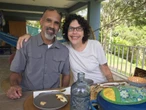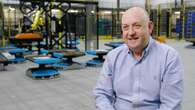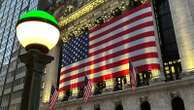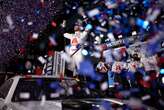Jeff Bezos once said, “I like to wander.” That may seem counterintuitive in a business world obsessed with speed, but in a relentless pursuit of momentum, many leaders forget that speed without reflection leads to burnout, inefficiency, and poor decision-making.
A report by Asana revealed that nearly 70% of executives say burnout has affected their decision-making ability. The paradox is clear: The faster we try to move without reflection, the more we risk burnout, inefficiency, and short-sighted decision-making.
Leaders often mistake pausing for procrastination. However, the reality is that strategic pausing is a high-performance leadership move that separates reactionary decision-makers from visionary leaders. It’s not about slowing down indefinitely; it’s about creating intentional space for recalibration so that when we do move forward, we do so with clarity, focus, and impact.
The high cost of constant acceleration
We live in an era where agility and rapid execution are prized above all else. But speed without strategy is like driving a high-performance car without brakes; eventually, you crash. Consider what happens when leaders don’t pause:
- Burnout skyrockets: More than 75% of employees experience burnout, and leaders aren’t immune. Urgency breeds exhaustion.
- Decisions suffer: Without pauses, leaders react instead of strategizing—leading to short-term fixes, not long-term solutions.
- Innovation stalls: Breakthroughs don’t come from busyness. They emerge from reflection, setbacks, and unexpected insights.
When leaders don’t pause, they burn out, make poor decisions, and stifle innovation. But what if the very thing we fear—slowing down—is actually the secret weapon for sustainable success? Science backs this up.
The science behind slowing down
Neuroscience supports the idea that structured reflection enhances cognitive performance and decision-making. Harvard Business School research has shown that leaders who regularly engage in structured reflection improve their productivity and performance by 23%.
There are two critical ways slowing down improves leadership effectiveness:
It activates “diffuse mode” thinking. When we take breaks from active problem-solving, our brains process information in the background, leading to creative insights and better solutions.
It improves emotional intelligence. Leaders who pause before reacting better navigate difficult conversations, manage conflict, and lead with empathy—key traits that drive engagement and retention.
Jeff Bezos famously introduced the “Day One” mindset at Amazon, a philosophy that ensures the company never becomes complacent. While Amazon is known for rapid execution, its leadership regularly pauses to reassess its strategic direction. Bezos would take time away from operations to think long-term, a practice that helped Amazon evolve from an online bookstore into a global tech giant.
I once worked with a biotech leader whose team was stuck in a cycle of continuous problem-solving, trying to rush a product to market. I encouraged them to step back and ask, “What are we missing?” That moment of intentional pausing led to a breakthrough that fundamentally changed the company’s approach and resulted in a novel strategy no one had anticipated.
The ‘Slow down to speed up’ framework for leaders
How can leaders implement this strategy in their own organizations? Here’s a practical framework:
- Pause with purpose: Book a 30-minute “strategy pause” into your weekly calendar. Treat it like a non-negotiable meeting.
- Ask better questions: Start your next leadership meeting with a single, high-quality question that shifts the team’s thinking: What are we missing? Are we solving the right problem? What’s the long-term impact of this decision?
- Create space for strategic thinking: Encourage teams to step away from constant execution. Google’s “20% Time” policy, which allows employees to spend a portion of their workweek exploring new ideas, has led to some of the company’s most successful innovations, including Gmail and Google Maps.
- Embrace rest as a performance strategy: Elite athletes know that recovery is as important as training—the same applies to leadership. Leaders who take intentional breaks return with sharper insights and renewed energy.
- Foster a culture of reflection: Implement a 10-minute debrief ritual after major milestones to extract key lessons. Encourage teams to analyze what worked, what didn’t, and what could be improved.
Sustainable success isn’t about moving the fastest; it’s about moving with the greatest clarity. The leaders who make space for strategic pauses aren’t the ones who fall behind—they’re the ones who set the pace for everyone else. Before your next big decision, ask yourself: Am I moving fast just for the sake of moving? Or am I creating the space to move forward with clarity? The difference could define your leadership and your legacy.








No comments